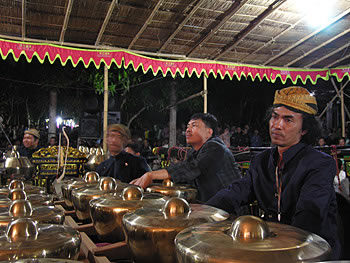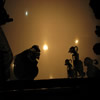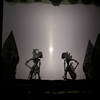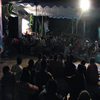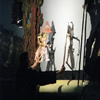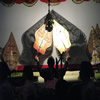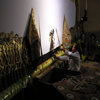Gamelan (Orchestra) *
Gamelan is an Indonesian orchestra that mainly consists of percussion instruments such as gongs and metallophones. Female singers (pesindhen) and a male chorus (penggerong) are also involved in a complete ensemble.
In Indonesia, particularly on Java and Bali, gamelan is an essential accompaniment for wayang performance and other dramatic forms. Gamelan is also enjoyed as an element of ritual celebrations such as wedding receptions, circumcisions, and village ceremonies. New contexts for gamelan have developed over the years; today there are special performances for Indonesia’s Independence Day, radio and television programs, and informal “jam” sessions that are occasionally sponsored by gamelan patrons and connoisseurs.
Important aspects of gamelan performance practice include the tuning system (laras) and modal classification (pathet). The two principle tunings are laras slendro (with five tones per octave) and laras pelog (with 7 tones per octave). Traditionally, wayang kulit performances employed only laras slendro gamelan. Today, a full gamelan consists of both laras slendro and laras pelog. One of the unique characteristics of gamelan music is that the pitches of these tuning systems are not found in the Western scale.
Gamelan in Wayang Kulit Performance
The gamelan orchestra is a vital accompaniment for wayang kulit performance. Music supports the all-night performance almost non-stop, though the number of instruments that play may vary. Gamelan serves both musical and dramatic functions -- music sets the mood, interprets, and reinforces various aspects of the dhalang’s narrative. The entrances and exits of particular characters to the stage, journeys, battles, and narrations are accompanied by musical compositions of various lengths. At certain junctures of the play, the dhalang chants or sings songs (called sulukan) to set the mood of the scene, which is accompanied by soft-sounding instruments.
Among the many instruments in the ensemble, the most important for wayang kulit is the gendér. This metallophone accompanies all narratives, sulukan, and musical compositions. Because of the importance of this instrument, it is always positioned directly behind the dhalang.
Also essential to wayang performance is the kendhang, a drum. The kendhang sets the tempo of the music and the puppets’ dances. Tempo signifies dramatic action: loud, accelerated music bolsters the intensity of the drama, whereas soft music, with a slow tempo, serves as background music for the dhalang’s narration or an important character’s recitation. Changes in the tempo are led by the kendhang when the drummer receives a cue from the dhalang.
The three acts in wayang kulit performance parallel the mood progression of the three modes of music: Pathet Nem, Pathet Sanga, and Pathet Manyura. These three acts also symbolize stages and spiritual developments in the life of the story’s hero.
Conducting the Orchestra
In addition to his main role as wayang kulit performer, the dhalang conducts the orchestra. He signals to the musicians and singers what composition to play, and when to play it. This is done through verbal and musical cues. The dhalang gives verbal cues to the musicians in the form of a riddle or code whose word association is synonymous to the title of the required composition. The musical cues can be in a form of a short melody. Another type of musical cue is a rhythmic pattern tapped on the puppet chest by the dhalang with his mallet (called cempala). The knocking sound of the cempala on the box also serves other functions such as signaling the switch from one speaker to another in characters’ dialogue, emphasizing important dialogue and recitations, and supporting an exhilarating song.
* Content provided by Dr. Sumarsam, Adjunct Professor of Music at Wesleyan University.


